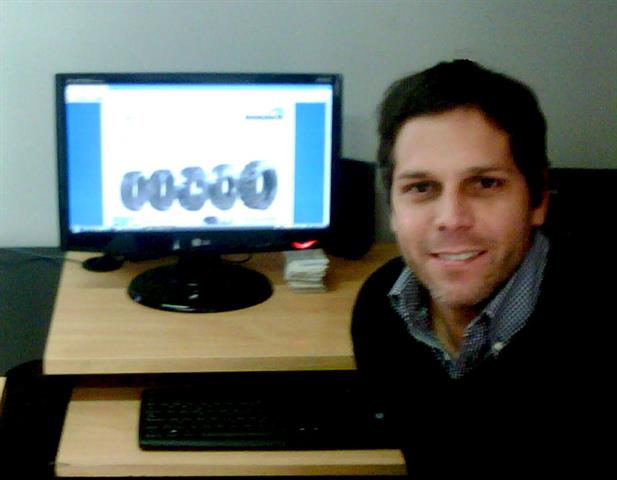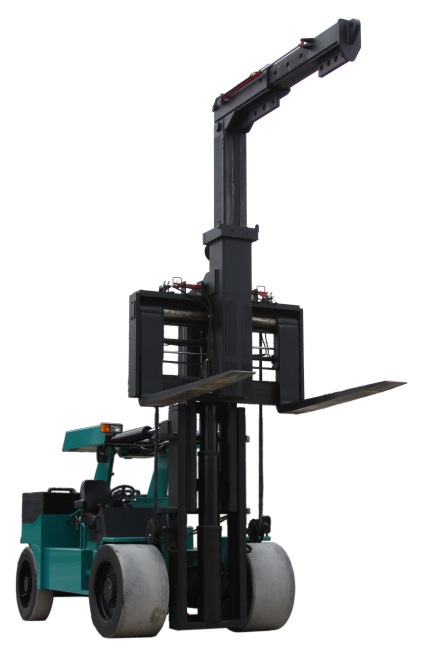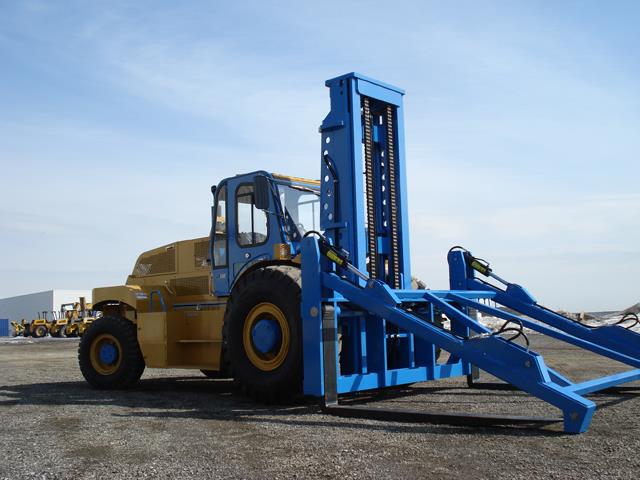 Hernan Acosta, Rodaco International Tires |
Latin America is considered the Spanish- or Portuguese-speaking areas of the Americas, including Mexico and the off-shore islands. It covers a total area of more than 21,000,500 square kilometres (7,880,000 square miles), making it larger than the US, China or Europe. Total population in 2009 was estimated at 568 million and economic growth estimated at 4%, slightly higher than the expected world economic growth for the same period.
Interestingly, the IMF recently revised its 2010 growth estimates for emerging and developing countries, of which Latin America is a member, to 6%. This, it says, is due to stronger economic frameworks and swift policy responses, which cushioned the impact of falling markets and quickly re-attracted capital flows.
Furthermore, a recent article in the New York Times states the return to growth has surprised even most government planners. In Brazil, for instance, growth could reach a brisk 7.3%, while Mexico's growth may be 5% in 2010. Peru's GDP in April was 9.3% higher than a year before.
Strong demand in Asia for Latin American commodities such as iron ore, tin and gold is the primary reason, according to the Times. But savvy macroeconomic management has surely played some role, it adds.
Doing business in Latin America Orion High Capacity forklift. High Reach is currently looking for dealers in Latin America. |
According to observers, it appears that Latin America's reputation for being a difficult place to do business is finally and emphatically being put to rest. It is an exciting time for business in the region. From Europe to Asia, Australia to North America, a diverse range of businesses, but particularly those in the materials handling sector, are finding opportunities in Latin America in timber and logging, mining and gas, shipping, manufacturing and construction.
Historically, the main issues for international companies were poor logistical infrastructure, turbulent politics and prescriptive import tariffs.
A major collaboration between MIT-CTI (the Massachusetts Institute of Technology and the Centre for Transportation and Logistics) and local Colombian logistics company LOGyCA aims to address some of these issues. In 2009, in a joint USD 19 million agreement between the two bodies, the Centre for Latin American Logistics, MTL-CTL was opened in Bogata, Colombia.
The centre aims to provide training for logistics management and research in Latin America. Dr Chris Caplice, executive director of MTL-CTL, says the area "boasts one of the most robust supply chain infrastructures in the region, offering virtual and real environments in which to test, adapt and develop supply chain technology".
Traditionally, Latin America's trading partners have come from its near neighbours, Canada and the US. Most of the large forklift manufacturing companies such as Yale, Hyster, Taylor, Cascade, Raymond and Caterpillar have extensive and established dealer networks throughout Latin America because of proximity as well as free trade agreements.
In recent years, however, exports from the US to Latin America have fallen. Export sales of construction equipment, for example, dropped 29% in 2009 to a total of USD2.4 billion. Central America took delivery of USD1.3 billion of US construction equipment, a 34% decrease. It is reasonable to assume that materials handling equipment has suffered similar falls.
As reported in
Forkliftaction.com in March this year, the top buyers of US-made construction machinery for 2009 included: (1) Canada - USD3.7 billion, down 41%; (2) Mexico - USD1 billion, down 28%; (3) Australia - USD922 million, down 47%; (4) Chile - USD763 million, down 16%; (5) Brazil - USD513 million, down 29%; (7) Colombia - USD392 million, down 17%; (10) Peru - USD319 million, down 20%; and (15) Venezuela - USD165 million, down 57%.
Despite somewhat gloomy statistics, Gianni Martucci, export sales manager for CVS Ferrari in Miami, believes that trade with Latin America kept many US businesses afloat during the GFC. "I saw lots of companies in my area keeping their balance sheet in positive only because they had a good percentage of their business in South America," he notes.
A number of European forklift brands are represented across Latin America and the organisers of Movimat 2010 have reported a surge of interest from Chinese forklift manufacturers. Organisers note that a year ago, only one Chinese manufacturer, Heli Hangcha, attended Movimat. This year EP, Logger, CHL, Dalian and Ruyi Hedesa all have stands.
Forklifts in Latin AmericaIt is estimated that approximately 15% of intralogistic equipment in use in Latin America are forklifts working with palletised loads. In Brazil, electric forklifts make up 57% of the fleet, with combustion engines accounting for 41%. Guilherme Periera Osorio, director of Movicarga, Brazil, confirms that most in the forklift market prefer "low-emission and electric machines".
According to Mark Aldrovandi, spokesman for Manitex-LiftKing,Canada, forklift purchases in Latin America are influenced by price and specifications. Often, he says, "buyers will try to bypass a dealer and deal directly for both new and used forklifts". Manitex-Liftking typically sells around 90% new machines.
In contrast, Hernan Acosta, sales director of Rodaco Industrial Tires, says that in Argentina, high inflation has severely affected the sales of new forklifts due to the inability of the purchaser to cope with long-term credit arrangements. He believes used forklift sales are much stronger at the moment because prices are lower and credit terms shorter. Luis Garza, principal of Mobinsa in Mexico, agrees, citing a 60% drop in new equipment sales in his region in 2009, with many businesses only surviving due to reasonable used equipment sales.
Acosta reports that in Argentina, the main industry users of forklifts are brewing, soft drink manufacturers, car assembly plants, food and construction.
Arturo Saldana, spokesman for Panama Cargo Solutions, says that in his region where the economy has only recently come out of a real estate and construction boom fuelled by US and EU retirees and foreign investment, most forklift sales have been in smaller-sized units to service the wholesale dry foods sector and telehandlers to service the construction industry. However, he feels that demand for both these types of machine has dropped due to the onset of the economic recession.
As a freight forwarder, Panama Cargo Solutions uses container handlers, but, as it operates in a small market, has only carried two or three units at a time. These have all been used machines, a Taylor TEC950L, Komatsu FD400-2 and a Taylor TEC150H, as the cost of a new machine has been prohibitive. Saldana adds that most of the container handlers in Panama are used by the port facilities or railway and are commonly Caterpillar.
Port and freight facilities throughout Latin America appear buoyant, with major foreign investment, particularly Asian, in facility and infrastructure development. Peru is poised to become the gateway to Latin America for trade between Asia and western Brazil. In addition, the much anticipated expansion of the Panama Canal scheduled for 2014 will allow for larger ships and greater container throughput.
Despite the global recession, the port of Buenos Aires has seen a significant rise in container activity in recent years. Kalmar, the heavy equipment arm of Cargotec, received its largest order in the region from Terminales Rio de la Plata S.A which holds the concession to manage Port of Buenos Aires opera¬tions until 2019. The company has bought four DRF 100-54S6 reach stackers, one 37 tonne forklift, one 20-tonne forklift and 15 terminal tractors.
According to Marcelo Massa, Kalmar Argentina's managing director, several factors have contributed to this expansion. "Firstly, this growth is not unique; the increase in containerisation cargo is a global phenomenon. However, specifically looking at Argentina, a new and better port infrastructure, the growth in agricultural exports and a reactivation of the country's imports have certainly helped trade.
"As a result of this increased volume of cargo, the port needed faster container handling capability. The new models have been purchased to replace older machinery, which in some cases had clocked up to 48000 hours, and to add more efficient technology and greater capacity. I believe they chose Kalmar as we have built up a strong relationship with the customer. They trust in our equipment, service and spare parts support."
The expansion of mining, gas and oil industries in Latin America has created greater demand for rough-terrain forklifts. Nick Acocella, director of international sales and marketing for Canadian manufacturer Omega Lift, says his products are being used in Mexico, Colombia, Venezuela, Brazil and Chile. These include a Mega series machine with tyre-handling attachment in an underground mine, various MEGA and HERC series models with pipe-grappling equipment working in the gas and oil industry and 4D Multiloader used for loading steel.
Aldrovandi believes that rough-terrain forklift sales will increase in Latin America as most new applications will be in less developed regions with the added difficulties of heavy rains and frequent earthquakes.
The top five forklift brands in Brazil, according to Leo Resende, materials handling analyst at Terra Forklifts, Brazil, are Hyster, Clark, Yale, Toyota and Hyundai. He bases his information on the number of dealers for each. But Nissan must surely be close behind, with Movicarga recently appointed official distributor for Nissan forklifts in Brazil, reporting sales of 1,990 new machines this year and leasing a further 50 new and used machines. The company has another 50 orders on the books, which are expected to be delivered before the end of the year.
Regulations and restrictions Latin America is made up of a number of different countries and each has its own environmental and safety regulations, particularly in the mining sector and the food industry. Generally, regulators follow the example of North America and their guidelines. In George Keen's experience as a management consultant to the US Materials Handling industry, he believes that some of the environmental requirements in Latin America are "leading edge" and "stronger than those in the US".
In Argentina, for example, importers of used equipment must recondition the forklift and the forklift brand must have an agent in the country. As a member of the World Trade Organisation (WTO), Argentina signed the Agreement on Technical Barriers to Trade (TBT), affirming its obligations, relative to technical regulations and conformity assessment procedures.
Mexico recently introduced regulations about the use of combustion engines indoors and any forklifts not under the NAFTA (North American Free Trade Agreement) are liable for importation tax. Companies must show compliance with mandatory Mexican standards, known as Normas Mexicanas (NOMs). The Mexican government generally recognises international standards such as those issued by the International Standards Organistation, ISO and the International Electrochemical Commission, IEC These standards tend to favour European manufacturers.
In Chile, standards are not generally mandatory, but companies can voluntarily comply with them, especially in industries where such compliance constitutes a sort of "seal of approval". However, certain imported products, such as those pertaining to industrial safety, building and construction materials, must comply with specific resolutions applying to the supervising entity.
The Brazilian Association for Technical Standards (Associacao Brasilera de Normas Technicas) is the recognised standards organisation. INMETRO, a government entity, is the national accreditation body. Brazil is also a co-signatory to the WTO's Technical Barriers to Trade Agreement and therefore must comply with its regulations.
Forklift issues in Latin AmericaProviding post-sales service is one of the major issues for both dealers and end-users in Latin America. Mexico, because of its proximity to the US, has less difficulty but Aldrovandi points out that "anywhere else in the region, it is difficult to get parts, especially by next day, unless the machine is in a major city". He adds that there is a wide-spread "grey market" in spare parts requiring machines to be reworked more often to replace the inferior part. There is also a long-standing problem locating Spanish-language service manuals.
With the influx of Chinese machines onto the Latin American market, there are increasing reports that parts for those machines are also sometimes difficult to locate.
In Keen's opinion, after-sales service will undergo an evolution in Latin America. He believes that "as margins have eroded, dealers are beginning to recognise the necessity of parts and service to their survival. Generally we see this evolution happening as countries mature in the industry. Dealers in Latin America need to educate the customer that they can do a better maintenance job than the customer can".
Picking up on this trend, Movicarga is planning to have Nissan spare parts in stock by 2011 so it can service its customer base. Kunzler Christiano, vice-president of Brazil Machines, an Hyundai dealer says, "heating of the economy and good expectations with the 2014 World Cup and 2016 Olympics brings good opportunities to the Brazilian market". In response, Brazil Machines has invested in new product lines and experienced sales and service staff to meet anticipated demand.
Most end-users and dealers in Latin America believe the economies which have been lagging will pick up and so will forklift sales, particularly new electric forklifts. Acosta believes sales of new Chinese forklifts will increase, threatening the used forklift market with their lower prices and day-to-day reliability.
 Omega Mega Series machine |
Aldrovandi believes that the resource-rich regions around Latin America have been relatively undeveloped and are a huge potential market for rough-terrain forklifts. Acocella agrees with this estimate and says that "Omega Lift sees Latin America as an area for continued growth and market penetration".
Finally, in a boost to manufacturing and dealer confidence, Hannover Messe announced in February this year that the first CeMat Intralogistics trade show for South America will be held in Sao Paolo, Brazil in April 2011. It is expected to attract over 250 companies with Still, Jungheinrich, Yale, Paletrans, Linde, Hyster and Clark already committed.